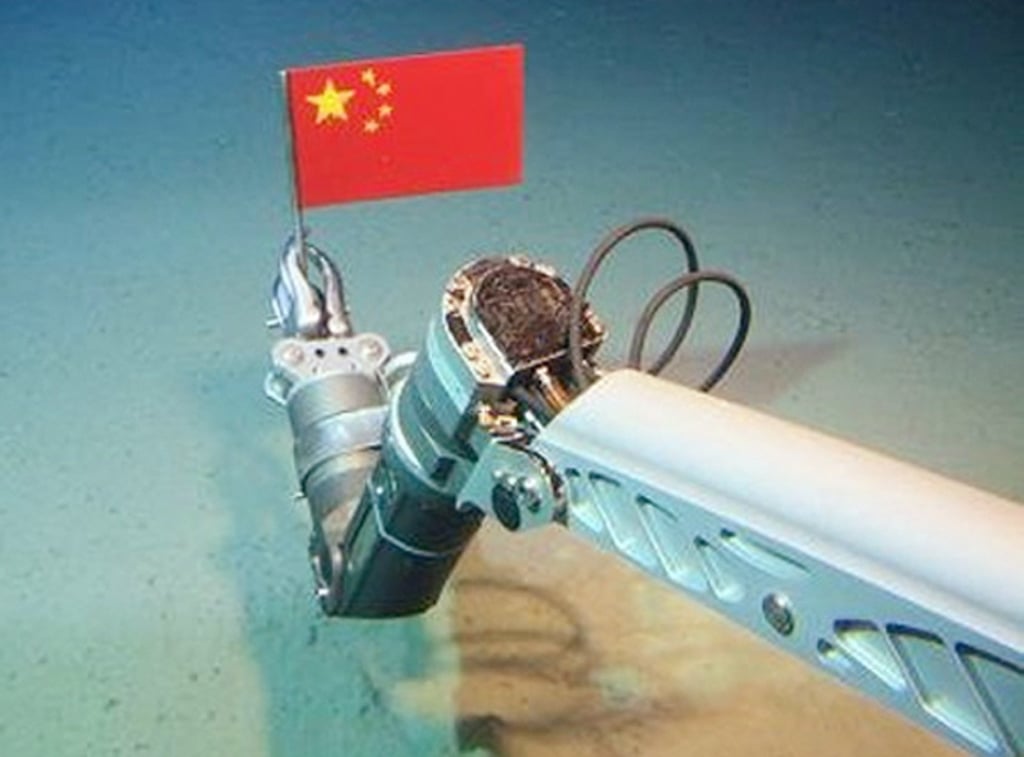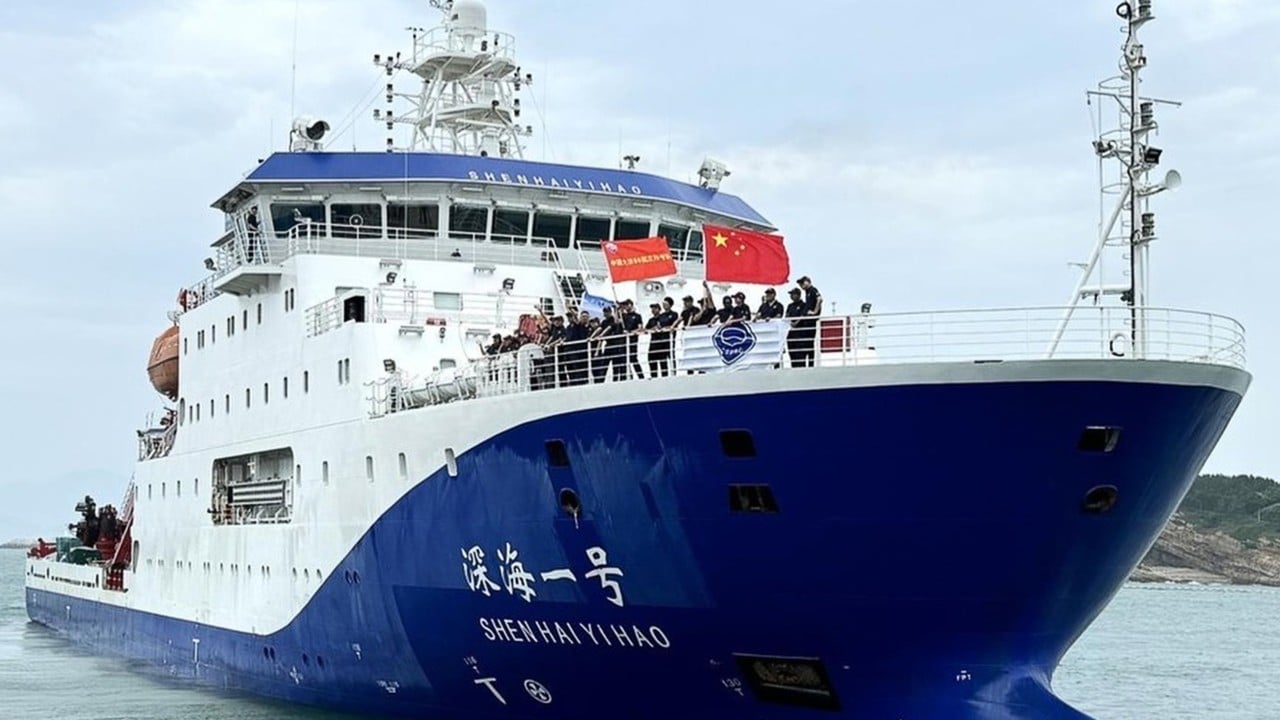A Chinese research ship has embarked on a deep-sea expedition with an international team on board, heading to the western Pacific on a mission to explore the ocean’s depths in one of the most advanced Chinese submersibles.
The 45-day mission, launched on Saturday, aims to explore seamounts – underwater mountains that are among the least-surveyed places on Earth.
The international crew of 60 aboard the Shenhai Yihao, the mother ship of the Jiaolong submersible, includes researchers from mainland China and Hong Kong as well as eight scientists from Australia, Spain, Canada, Mexico, Singapore, Bangladesh, Nigeria and Colombia
The non-mainland scientists will be led by Qiu Jianwen, professor and associate head of the biology department at Hong Kong Baptist University.
Shenhai Yihao and the Jiaolong will make a port call in Hong Kong from September 23 to 25 during the return leg of the trip. It will be the first time for the crewed submersible to visit Hong Kong.
The international team will get a close look at the sprawling Magellan Seamounts on board the Jiaolong, which can dive up to 7,000 metres (22,966 feet). Eighteen dives have been arranged for the mission, according to state news agency Xinhua.
The group of seamounts stretches east from the Mariana Trench, the deepest part of the world’s oceans. The location of the mission, in the waters between Japan and the island of New Guinea, was chosen due to its unique geological features, which may help scientists improve their understanding of biodiversity, topography, ocean island volcanoes, mineral resources and the impact of climate change and human activities.
“Other than the Jiaolong, deep-sea samplers, landers and other equipment will also be deployed to investigate seamount biology and habitats,” said Xu Xuewei, the mission’s lead scientist and deputy director of the Ministry of Natural Resources’ National Deep Sea Centre.
China is in a race with the West to develop its maritime and marine exploration abilities. It aspires to lead global oceanic studies and exploration missions in a range of fields, from deep-sea mining to intelligence.

The country has launched advanced vessels and submersibles in nearby waters such as the South China Sea as well as missions much further afield.
In 2020, China’s Striver submersible, designed to dive more than 10,900 metres, reached the deepest known spot in the Mariana Trench.
In a controversial move in 2010, the Jiaolong’s robotic arm unfurled a Chinese flag at the bottom of the South China Sea, drawing ire from neighbours with competing territorial claims in the contested waters.
The seamount expedition is part of scientific efforts under the United Nations Ocean Decade study and preservation programme.
Xinhua said Jiaolong performs well at sampling and has a low environmental impact. The submersible will be used to capture deep-sea organisms, seawater, sediment, corals and microorganisms.
In April 2018, China sent a team to the Magellan Seamounts where they sampled rocks and marine life using a deep-sea robot.
In May, the Jiaolong and its mother ship completed a 164-day, 57,000km (35,418-mile) excursion across the Indian and Atlantic oceans, where they carried out 46 dives. It was the first time Jiaolong was used in the western Atlantic Ocean.


